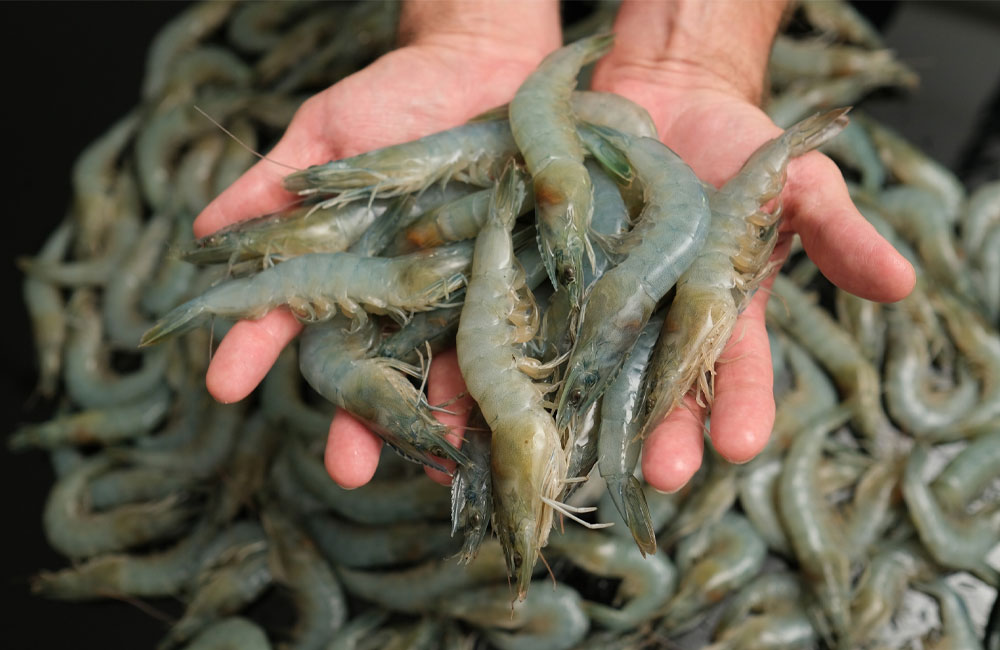The Shrimp Industry Information System (SIIS) has been officially unveiled by Fisheries Minister Ramalingam Chandrasekar, marking a pivotal step in the digital transformation of Sri Lanka’s shrimp aquaculture sector.
Developed under the Food and Agriculture Organization (FAO) project “Smart and Sustainable Aquaculture through Effective Biosecurity and Digital Technology,” the platform is a joint effort involving the National Aquaculture Development Authority (NAQDA), the National Aquatic Resources Research and Development Agency (NARA), the Department of Animal Production and Health (DAPH), and the Centre for Aquatic Disease Diagnosis and Research (CADDA).
SIIS integrates Internet of Things (IoT), Artificial Intelligence (AI) and advanced analytics to provide real-time, accurate data to shrimp farmers and policymakers alike. The system is designed to uplift productivity, bolster environmental sustainability and support longer-term growth of the sector.
Sri Lanka’s shrimp aquaculture has become increasingly export-oriented, driven by rising global seafood demand and investment in improved farming practices. According to reports, the local industry is dominated by two main species: the traditional black tiger prawn (Penaeus monodon) and the more recently introduced Pacific white shrimp (Litopenaeus vannamei).
Production is concentrated in the north-western and eastern coastal belts of the country. The latest statistics show that the inland-culture shrimp farms accounted for about 5,540 metric tons in the first nine months of 2025, representing around 2 per cent of total inland fisheries production.
Meanwhile the broader aquaculture sector also remains modest compared with capture fisheries, but with strong potential. Market research projects that Sri Lanka’s shrimp market could grow at an average rate of around 7 to 10 per cent between 2025 and 2027, as global demand for sustainably farmed shrimp expands.
Exports of shrimp and prawn products remain a key foreign-exchange earner for the fisheries sector. Recent figures show that for January-September 2025 prawns were exported with a value of approximately Rs 6,064.3 million
The industry is pressing ahead to elevate its performance by adopting stronger bio-security, traceability and value addition in the supply chain. The FAO’s Smart Aquaculture Biosecurity (SAB) initiative is also helping to guide Sri Lanka’s shrimp industry toward sustainable, digital-enabled operations.
However, while the launch of SIIS is a milestone, the sector still faces challenges. Environmental pressures such as wetlands loss, shrimp-farm effluent discharge and biodiversity decline have been identified in recent ecological studies in regions such as Batticaloa.
At the same time, Sri Lanka’s shrimp producers must compete with larger volume producers in Asia, maintain access to demanding export markets in the EU, US and Japan, and meet increasingly strict certification and traceability standards.
Experts believe the SIIS can play a critical role in addressing these challenges by enabling better monitoring of farm-level parameters, disease outbreaks, and logistics flows. For farmers, real-time alerts can reduce losses; for regulators and policymakers, the system offers insights to guide sustainable development.
As the industry evolves, the combination of digital innovation and export market focus places Sri Lanka’s shrimp farming sector at a strategic crossroads. The SIIS rollout is being heralded as a key enabler of growth, competitiveness and sustainability in the coming years.

Leave your comments
Login to post a comment
Post comment as a guest